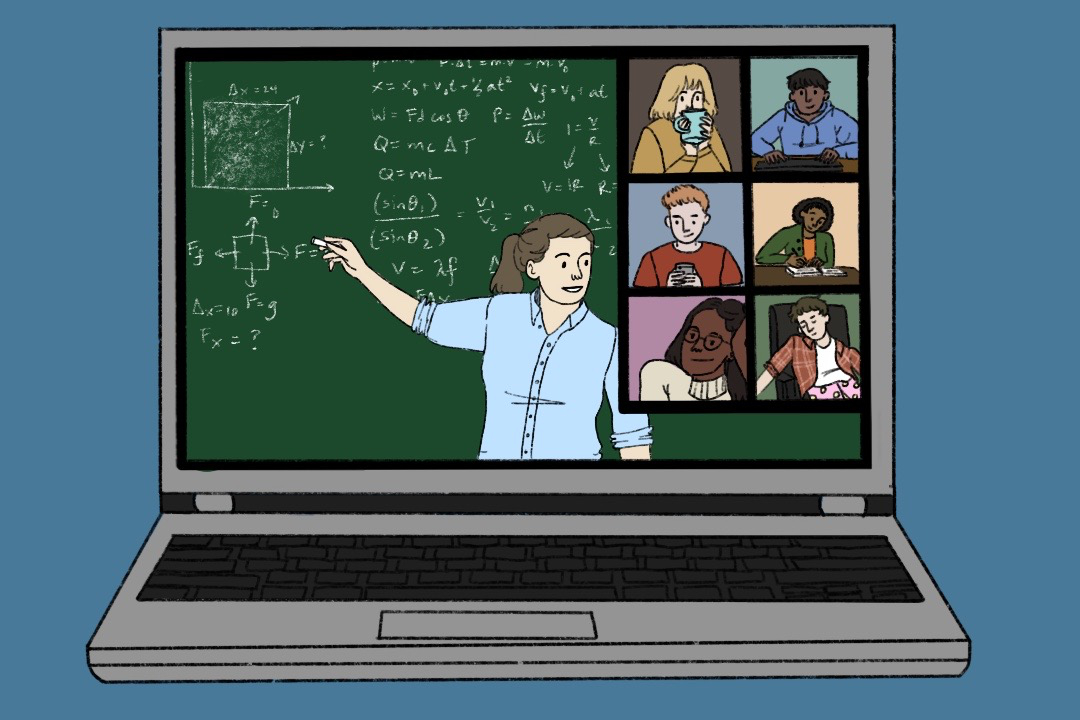It may feel like the onset of technology-mediated learning appeared overnight as a result of the COVID-19 pandemic, but while the pandemic certainly fast-tracked the widespread use of such tools, forms of virtual learning have been steadily making their way into education.
The growing popularity of online teaching and learning has sparked discussions of possible new innovations — and also valid concerns around the equity and accessibility of virtual learning models. In a recent paper from U of T, Klaudiusz Stoklosa and their team of researchers found that on average, students are more engaged, participate more, and ask more questions when they are physically present at a lecture.
The impact of location on student participation
Generally, in any model of teaching and learning, it’s important to consider participation and engagement from learners. Research has shown that student engagement is linked to many positive outcomes related to learning performance and students’ intrinsic satisfaction.
Engaging students in the learning process can increase their ability to focus, elevate their critical thinking skills, and improve their experience in the classroom. However, the onset of distance learning has raised questions around how this may impact learning performance and outcomes.
Stoklosa’s team conducted a case study of second-year medical students at UTSG and the Mississauga Academy of Medicine (MAM) at UTM to investigate whether student participation varied based on the physical presence of the lecturer in the lecture hall. The researchers noted that, despite the prevalence of distance learning in post-secondary institutions, there is a lack of research on its impact on medical student participation.
The researchers compared student participation between onsite and offsite lectures in different courses over 24 weeks. The onsite lecture group consisted of students that were present in the same room as the lecturer, while the same lectures were also broadcast to the offsite lecture group — a group of students who were located in a remote classroom. Students could ask questions by pressing a button at their desk which would then broadcast their questions across both lecture rooms for everyone to hear.
The case study used the number of questions asked by students during lectures as a measure of student participation. It showed that in the onsite group, MAM students asked 1.08 more questions per lecture and UTSG students asked 1.13 more questions per lecture.
The way forward
The study raises questions about equitable education experiences for students. While students’ participation levels may not provide a clear indication of their learning performance and outcomes, it can impact learning effectiveness.
Students who are unable to attend in-person lectures may be at a disadvantage. Students have reported that learning in a completely virtual environment during the pandemic has created challenges around feeling disconnected from their instructors and peers.
Many studies have been conducted comparing the efficacy of learning through different models, and they have produced varied results. A 2017 study that compared the effectiveness of hybrid lectures to traditional lecture formats found that students in the hybrid lectures were less successful than the students taking traditional lectures, although the correlation they found could be caused by many factors.
Elements of human connection like eye contact, rapport, and proximity can help students feel comfortable in engaging, and are missing during distance learning. This is exacerbated even more in a completely virtual learning environment.
This does not necessarily mean that one learning model is better than the other, especially since students have diverse learning styles and needs. As universities continue juggling virtual, in-person, and hybrid learning opportunities, it is paramount to identify measures to eliminate barriers to ensure students have equal chances to participate or engage in lectures in order to ensure all students have an equal opportunity for success.


